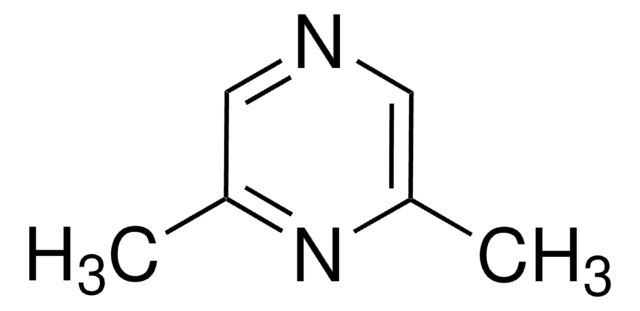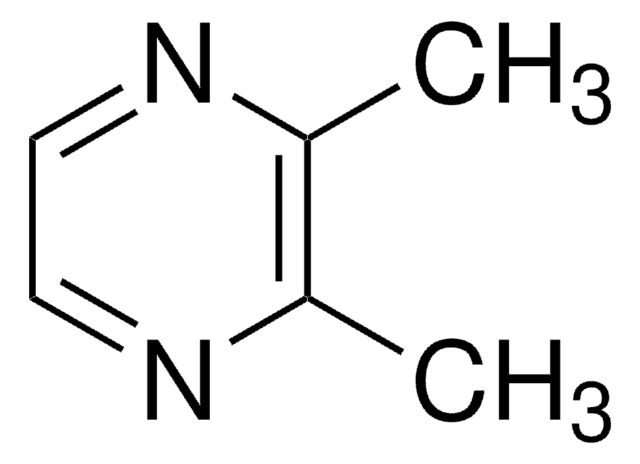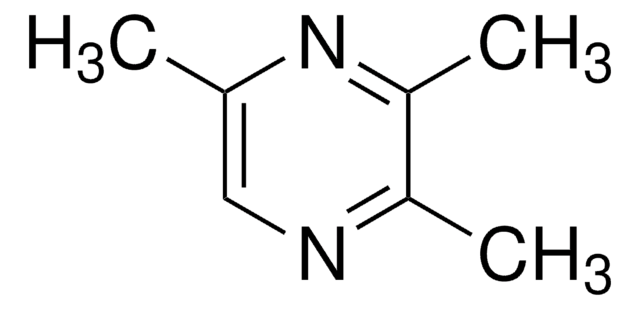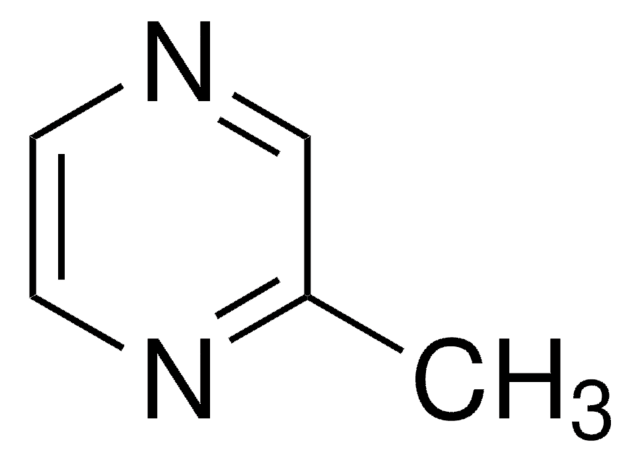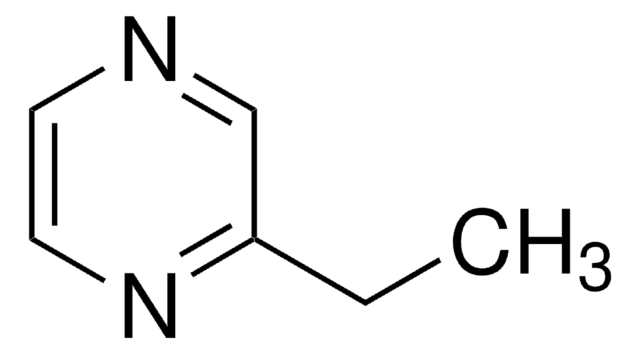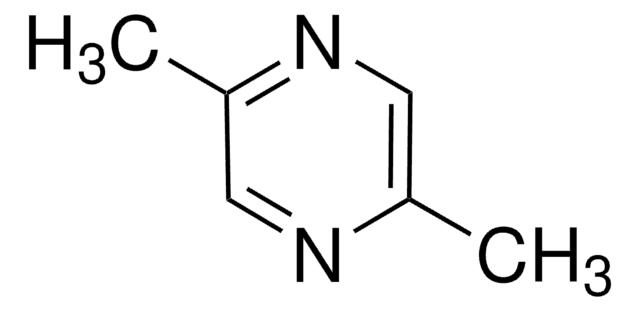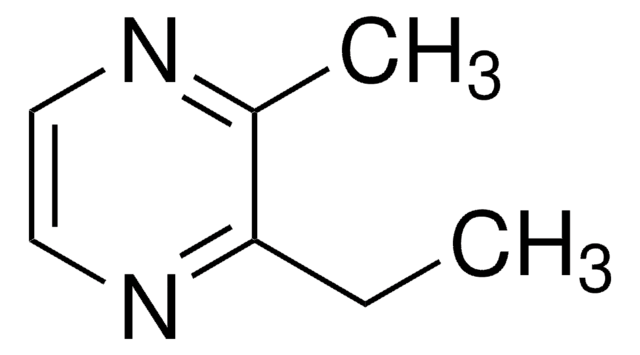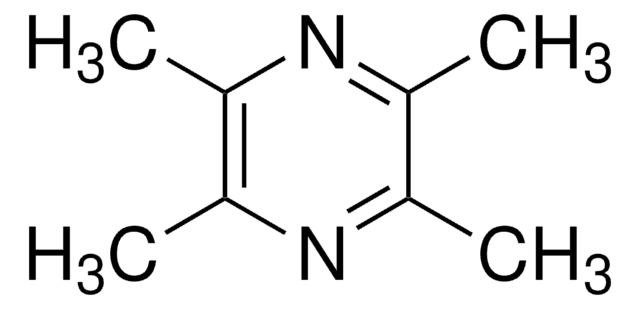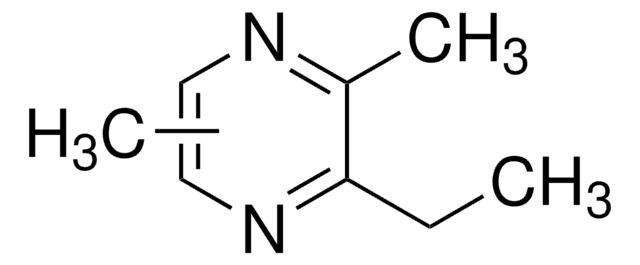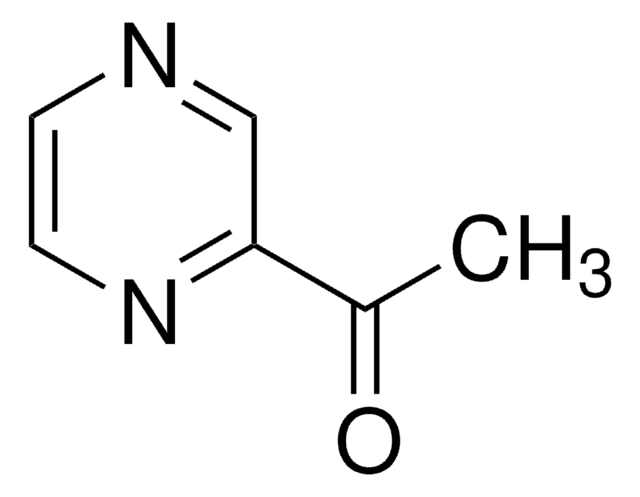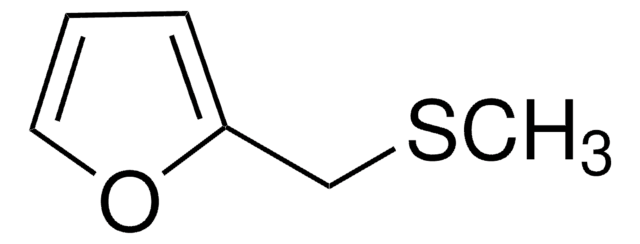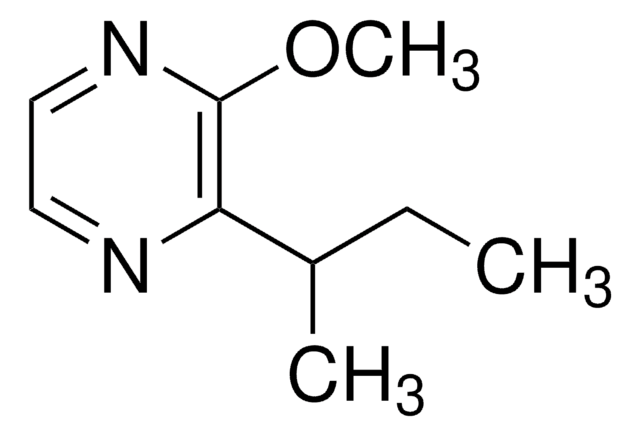W327204
2,5-Dimethylpyrazine
≥98%, FG
Synonym(s):
Ketine
About This Item
Fragrance grade
Halal
Kosher
Recommended Products
biological source
synthetic
Quality Level
grade
FG
Fragrance grade
Halal
Kosher
Agency
follows IFRA guidelines
reg. compliance
EU Regulation 1223/2009
EU Regulation 1334/2008 & 178/2002
Assay
≥98%
refractive index
n20/D 1.502 (lit.)
bp
155 °C (lit.)
density
0.99 g/mL at 25 °C (lit.)
application(s)
flavors and fragrances
Documentation
see Safety & Documentation for available documents
food allergen
no known allergens
fragrance allergen
no known allergens
Organoleptic
cocoa; nutty; woody; earthy
SMILES string
Cc1cnc(C)cn1
InChI
1S/C6H8N2/c1-5-3-8-6(2)4-7-5/h3-4H,1-2H3
InChI key
LCZUOKDVTBMCMX-UHFFFAOYSA-N
Looking for similar products? Visit Product Comparison Guide
Related Categories
General description
Application
- Engineering Escherichia coli for high-yielding 2,5-Dimethylpyrazine synthesis from L-Threonine by reconstructing metabolic pathways and enhancing cofactors regeneration.: This study details the genetic engineering of *E. coli* to enhance the production of 2,5-Dimethylpyrazine from L-Threonine. By reconstructing metabolic pathways and improving cofactor regeneration, the researchers achieved higher yields, presenting a significant advancement for industrial bioproduction of this compound (Liu et al., 2024).
- Pyrazines Biosynthesis by Bacillus Strains Isolated from Natto Fermented Soybean.: This research explores the natural biosynthesis of pyrazines, including 2,5-Dimethylpyrazine, by *Bacillus* strains isolated from natto. The findings contribute to understanding the microbial production of flavor compounds and their potential applications in food biotechnology (Klosowski et al., 2021).
Other Notes
Signal Word
Warning
Hazard Statements
Precautionary Statements
Hazard Classifications
Acute Tox. 4 Oral
Storage Class Code
10 - Combustible liquids
WGK
WGK 3
Flash Point(F)
147.2 °F - closed cup
Flash Point(C)
64 °C - closed cup
Personal Protective Equipment
Choose from one of the most recent versions:
Already Own This Product?
Find documentation for the products that you have recently purchased in the Document Library.
Customers Also Viewed
Protocols
Separation of 2-Ethyl-3-methylpyrazine; 1-Methylpyrrole; 2,3-Dimethylpyrazine; 2,5-Dimethylpyrazine; 2-Ethylpyrazine, ≥98%, FG; 2,3-Diethylpyrazine; 2-Methylpyrazine; Carbon disulfide; Dimethyl disulfide; 2,6-Dimethylpyrazine
-Cymene; 2,5-Dimethylpyrrole; Acetoin, ≥96%, FCC, FG; 2,5-Dimethylpyrazine; 2,6-Dimethylpyrazine; 2-Ethylpyrazine, ≥98%, FG; 2,3-Dimethylpyrazine; 4-Heptanone; 3-Ethylpyridine; 2,3,5-Trimethylpyrazine; Furfural; Pyrrole; Furfuryl acetate; Linalool; Linalyl acetate; 5-Methylfurfural; γ-Butyrolactone; 2-Acetyl-1-methylpyrrole; Furfuryl alcohol; 2-Acetylpyrrole; Pyrrole-2-carboxaldehyde
Our team of scientists has experience in all areas of research including Life Science, Material Science, Chemical Synthesis, Chromatography, Analytical and many others.
Contact Technical Service